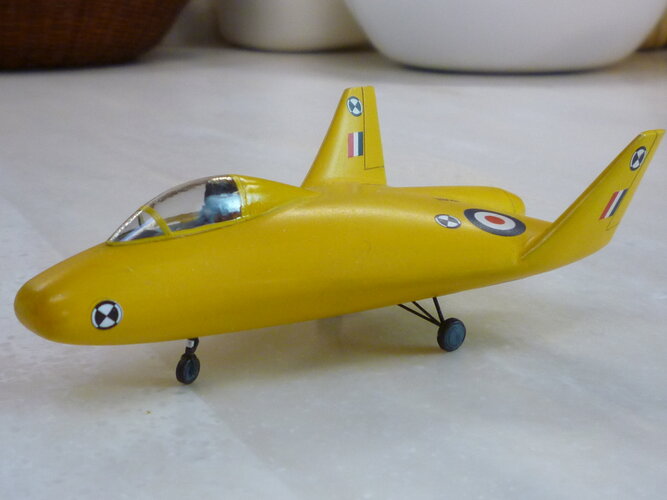Got hold of a copy at last.
What a wonderful book. It covers not only the Mustard project but everything that led up to it, as well as some of the things that it led on to, and all In Dan's inimitable style of detailed dissection and acute observation combined with original drawings and artists' visualisations.
I would like to have seen a bit more about the Rolls-Royce Flashjet project - was its heat source to be nuclear or, like the SABRE cycle, from kinetic heating? And I missed coverage of the more recent HOTOL affair. But that's just being picky, every book has to stop somewhere.
All the work at English Electric and Hawkers, and the huge amount of information flow between the US and the UK, is a real eye-opener into the Cold War space race.
If I may pass comment on one design in particular, the English Electric P.42 Scheme 9/1, drawing EAG 3308/1, undated but around 1959, is a close contemporary to the Lockheed project that became the A-12, the first "Blackbird". Dan comments that "the unusually cambered wing and fuselage were thought to offer greater stability at high speed." Although not immediately obvious, two key design features show a remarkable aerodynamic similarity between these contemporary designs.
The root section is reverse-cambered, with the long forward root at a higher angle of attack than the main wing. In the Blackbird, this section was regarded more as a sideways extension of the fuselage - "chine" is a term originating in boatbuilding and, later, flying boats, but the aerodynamics wouldn't care about that. At low airspeeds it does little more than create a stable vortex over the delta wing to maintain lift and controllability for takeoff and landing. But at supersonic speeds its very low aspect ratio becomes less significant and it begins to contribute significant lift. This moves the overall centre of lift forward, neatly counterbalancing the traditional wing's aft CL movement with increasing speed. While it thus contributes more to trim and a reduction in induced drag than to stability, the offloading of the main control surfaces from this function does make stability easier to maintain throughout.
The other feature is the sharply drooped leading edge of the outer wing, indicative of progressive twist or wash-out towards the tip. This again is seen on the Blackbird and it serves multiple purposes. It acts like a tailplane to improve longitudinal stability. It reduces the angle of attack at low airspeeds, delaying the tip stall and maintaining smooth airflow over the vital control surfaces. The progressive twist introduces a similarly progressive stall, giving the pilot a warning "burble" on the controls as the stall approaches. This much was known about it in 1906 and patented by J W Dunne in 1909. But what Dunne could not know was that at supersonic speeds its drag penalty would prove unexpectedly small and his patent swept leading-edge droop would be incorporated into a generation of Convair deltas, as well as the Blackbirds and, later, not only Concorde but a great many advanced warplanes.
Going back to 1959, one wonders who was copying whose bright ideas here - English Electric or Lockheed?




